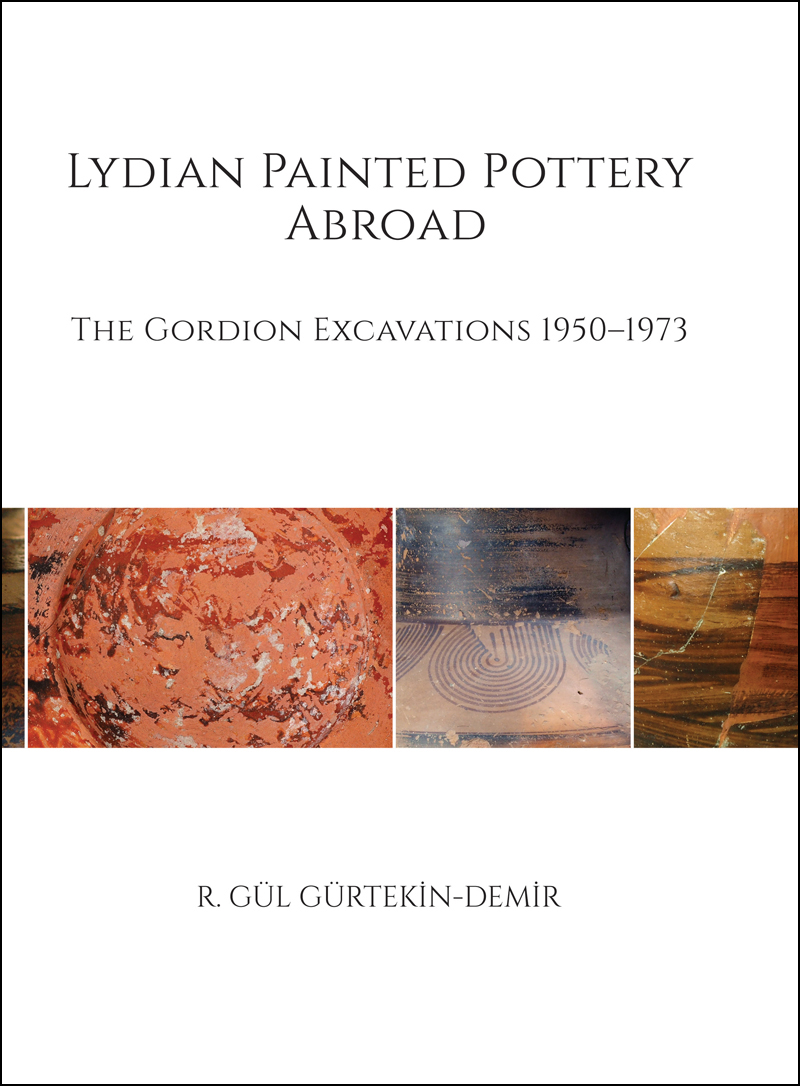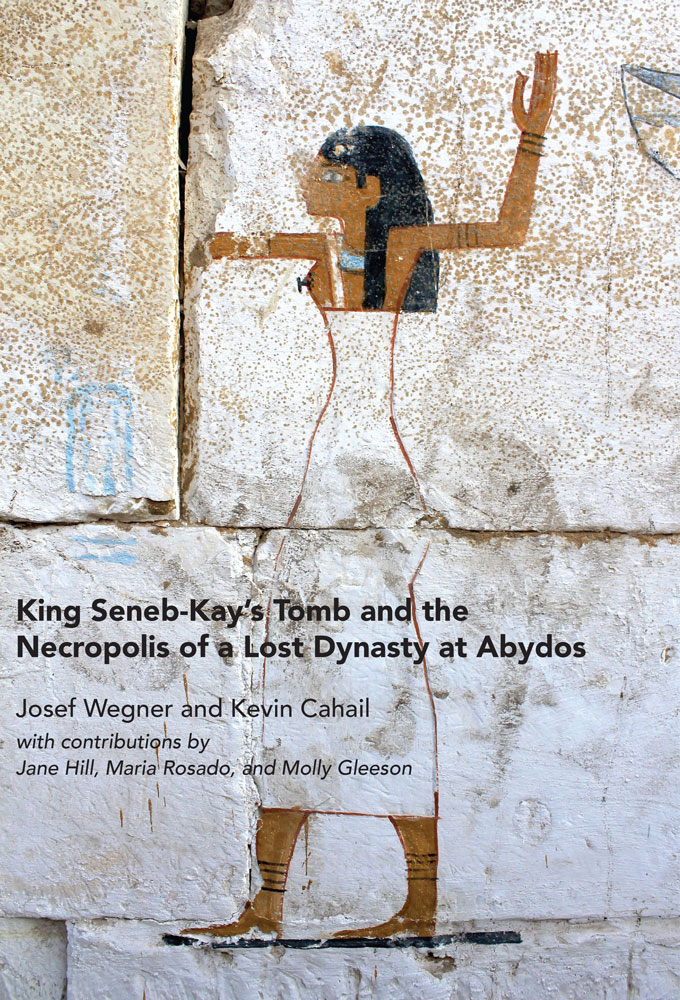Recent Titles





The Cremations
Author(s): Ellen Lucile Kohler, Elspeth R. M. Dusinberre
This volume contains the excavation report for 11 cremation burials from the Phrygian site of Gordion in central Anatolia. These tombs, dating from the later 7th century to the third quarter of the 6th century BCE, were excavated by the Penn Museum between 1950 and 1969, and by the Germans Alfred and Gustav Körte in 1900. The processes for interment through construction of tumulus and cremation procedure are detailed, followed by an analysis of associated finds. Two tumuli of the Hellenistic period, both covering stone chambers with inhumation burials, are included in an appendix. Further appendices present specific materials excavated from the cremations. A discussion of the contemporary inhumation and cremation tumulus burials at Gordion in the Phrygian period, highlighting their continuities and significant differences, forms part of the conclusion, as does discussion of sociocultural developments at Gordion between ca. 650–525 BCE as illuminated by the mortuary remains. The tumuli afford insights into issues related to gender, religion, adult/child identity, trade, social status, ethnicity, transcultural affiliations, ceramic developments, jewelry manufacture, high-status artifact display (including ivory), feasting behaviors, animal sacrifice, hero cult, and widespread “killing” of artifacts associated with the cremation burials.
This publication of Gordion’s tumuli makes available the elite cremation burials of the later Middle and early Late Phrygian (Achaemenid) periods, including the two Körte tumuli, and provides a complete presentation of the cremation tumuli at Gordion. They permit a glimpse into life, death, and an elaborate system of value at Gordion during this most turbulent century.
Ellen L. Kohler was Executive Editor of Gordion Publications from 1977–1987 and the Archivist for the Gordion Project Archives at the Penn Museum from 1987–2005.
Elspeth R. M. Dusinberre is Professor of Distinction in the Department of Classics at the University of Colorado Boulder.
This publication of Gordion’s tumuli makes available the elite cremation burials of the later Middle and early Late Phrygian (Achaemenid) periods, including the two Körte tumuli, and provides a complete presentation of the cremation tumuli at Gordion. They permit a glimpse into life, death, and an elaborate system of value at Gordion during this most turbulent century.
Ellen L. Kohler was Executive Editor of Gordion Publications from 1977–1987 and the Archivist for the Gordion Project Archives at the Penn Museum from 1987–2005.
Elspeth R. M. Dusinberre is Professor of Distinction in the Department of Classics at the University of Colorado Boulder.
Author(s): Phoebe A. Sheftel
Gordion is a paramount site for understanding the culture of central Anatolia over more than 3,000 years, from the Bronze Age to the Medieval period, but is most renowned for its Iron Age horizon, when it was royal capital of the mighty Phrygian kingdom. The hundreds of bone and ivory artifacts excavated at Gordion constitute a highly diverse body of material, and this publication presents one of the largest and most important assemblages of its kind in the Near East. The artifacts give remarkable insight into the tools used in crafts and manufacturing processes, a variety of decorative items, the artistic developments among local craftspeople, as well as indications of trading connections with other regions to the east and west.
Ivory was a highly valued material used for decorative pieces in many areas around the eastern Mediterranean. The objects from Gordion are a significant addition to this corpus and illustrate both widely dispersed features common in other contemporary ivory-working centers, as well as the singular motifs and styles that developed in the Phrygian milieu. A unique assemblage of ivory horse trappings from the Early Phrygian Citadel are an important illustration of this cultural confluence.
While bone was primarily used for strictly utilitarian objects, there are numerous pieces that show this lowly material could be used for high quality items such as inlays set into the wooden furniture exceptionally attested at Gordion. Even the sheep knuckle bone (astragal), decorated with incised designs and letters, gives a glimpse into the daily life in the community.
Phoebe A. Sheftel is an independent scholar and expert on bone and ivory. She has her Ph.D. from the University of Pennsylvania in Mediterranean Archaeology and has done fieldwork at sites in England, Greece, and Turkey.
Ivory was a highly valued material used for decorative pieces in many areas around the eastern Mediterranean. The objects from Gordion are a significant addition to this corpus and illustrate both widely dispersed features common in other contemporary ivory-working centers, as well as the singular motifs and styles that developed in the Phrygian milieu. A unique assemblage of ivory horse trappings from the Early Phrygian Citadel are an important illustration of this cultural confluence.
While bone was primarily used for strictly utilitarian objects, there are numerous pieces that show this lowly material could be used for high quality items such as inlays set into the wooden furniture exceptionally attested at Gordion. Even the sheep knuckle bone (astragal), decorated with incised designs and letters, gives a glimpse into the daily life in the community.
Phoebe A. Sheftel is an independent scholar and expert on bone and ivory. She has her Ph.D. from the University of Pennsylvania in Mediterranean Archaeology and has done fieldwork at sites in England, Greece, and Turkey.
The Gordion Excavations 1950–1973
Author(s): R Gül Gurtekin-Demir
This book is the first major study of Lydian material culture at Gordion and also the first published monograph on Lydian painted pottery from any site excavation. Richly illustrated, it provides a comprehensive definition and analysis of Lydian ceramics based on stylistic, archaeological, and textual evidence, while thoroughly documenting the material's stratigraphic contexts. The book situates the ceramic corpus within its broader Anatolian cultural context and offers insights into the impact of Lydian cultural interfaces at Gordion.
The Lydian pottery found at Gordion was largely produced at centers other than Sardis, the Lydian royal capital, although Sardian imports are also well attested and began to influence Gordion's material culture as early as the 7th century BCE, if not before. Following the demise of the Lydian kingdom, a more limited repertoire of Lydian ceramics demonstrably continued in use at Gordion into the Achaemenid Persian period in the late 6th and 5th centuries BCE.
The material was excavated by Professor Rodney Young's team between 1950 and 1973 and is fully presented here for the first time. Ongoing research in the decades following Young's excavations has led to a more refined understanding of Gordion's archaeological contexts and chronology, and, consequently, we are now able to view the Lydian ceramic corpus within a more secure stratigraphic framework than would have been the case if the material had been published shortly after the excavations.
The Lydian pottery found at Gordion was largely produced at centers other than Sardis, the Lydian royal capital, although Sardian imports are also well attested and began to influence Gordion's material culture as early as the 7th century BCE, if not before. Following the demise of the Lydian kingdom, a more limited repertoire of Lydian ceramics demonstrably continued in use at Gordion into the Achaemenid Persian period in the late 6th and 5th centuries BCE.
The material was excavated by Professor Rodney Young's team between 1950 and 1973 and is fully presented here for the first time. Ongoing research in the decades following Young's excavations has led to a more refined understanding of Gordion's archaeological contexts and chronology, and, consequently, we are now able to view the Lydian ceramic corpus within a more secure stratigraphic framework than would have been the case if the material had been published shortly after the excavations.
Author(s): Josef W. Wegner, Kevin M. Cahail
This volume is the publication and analysis of the tomb of pharaoh Seneb-Kay (ca. 1650-1600 BCE), and a cemetery of associated tombs at Abydos, all attributable to a group of kings of Egypt's Second Intermediate Period. The tomb of Seneb-Kay has provided the first known king's tomb of pharaonic Egypt that included decorated imagery in the burial chamber. That evidence, presented in full-color and discussed in detail in the volume, allows us to identify this previously unknown ruler along with a group of seven similar tombs that can be attributed to an Upper Egyptian Dynasty that survived for approximately half a century during a period of pronounced territorial fragmentation in the Nile Valley.
Author(s): Karen Sonik
This volume assembles leading Near Eastern art historians, archaeologists, and philologists to examine and apply critical contemporary approaches to the arts and artifacts of the ancient Near East.




